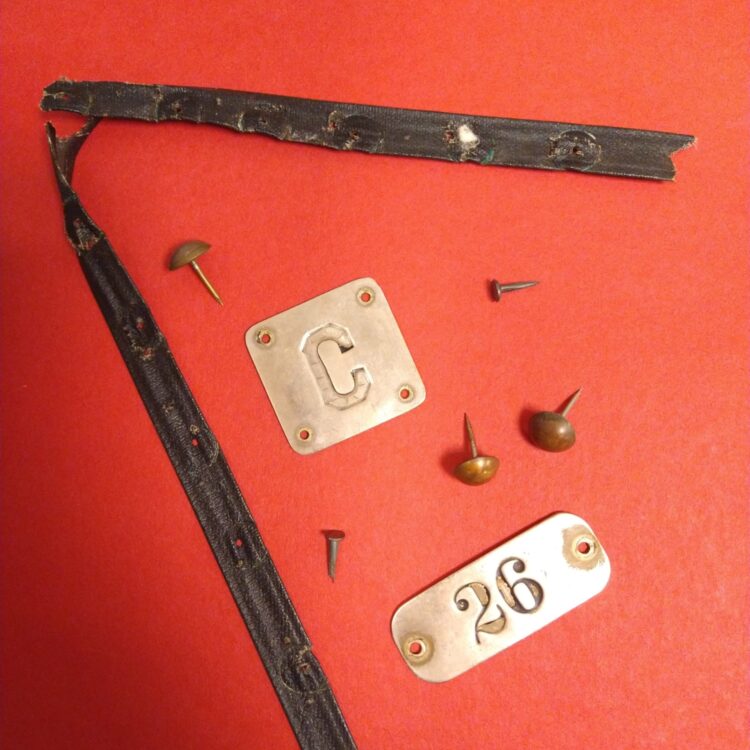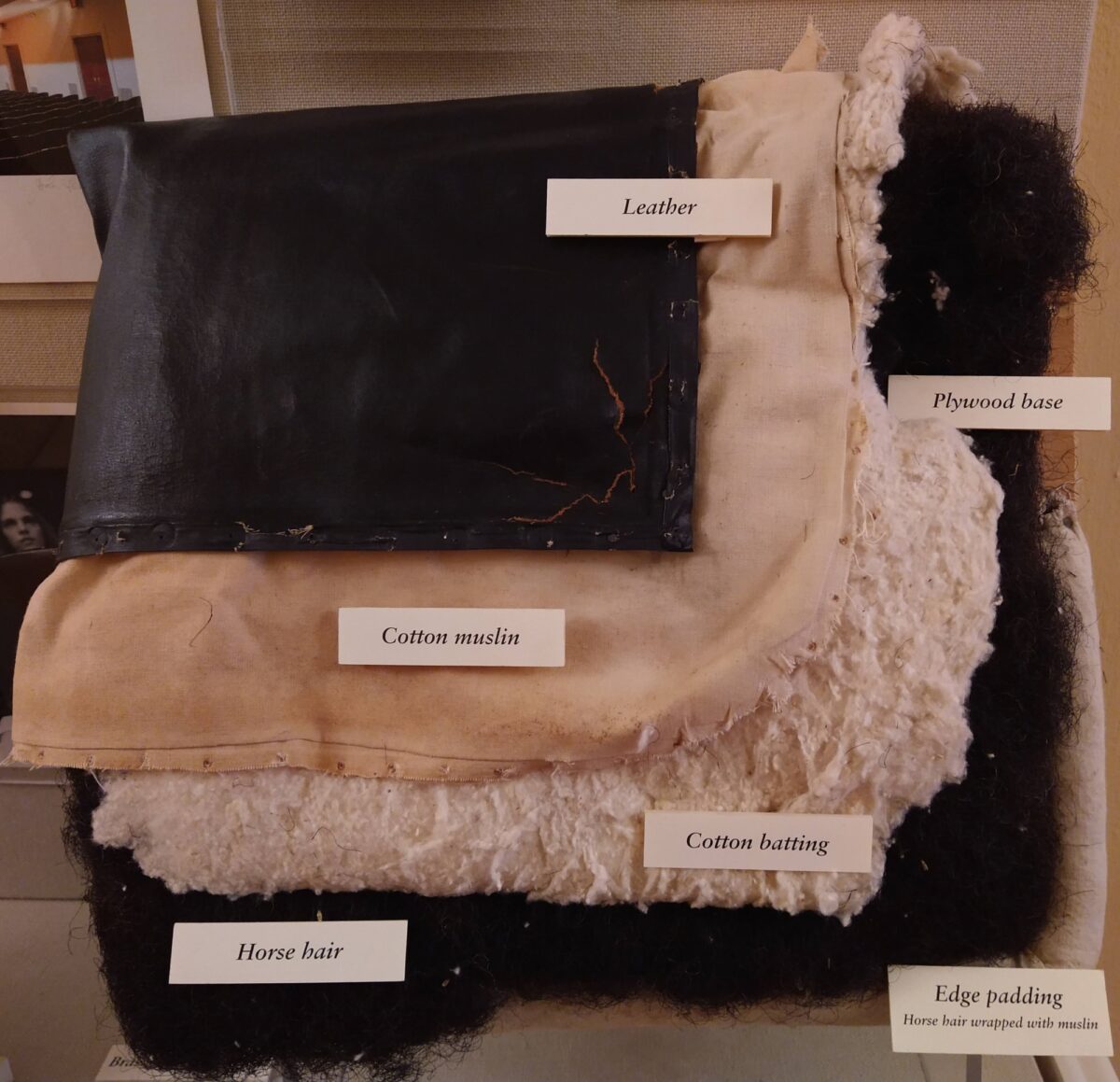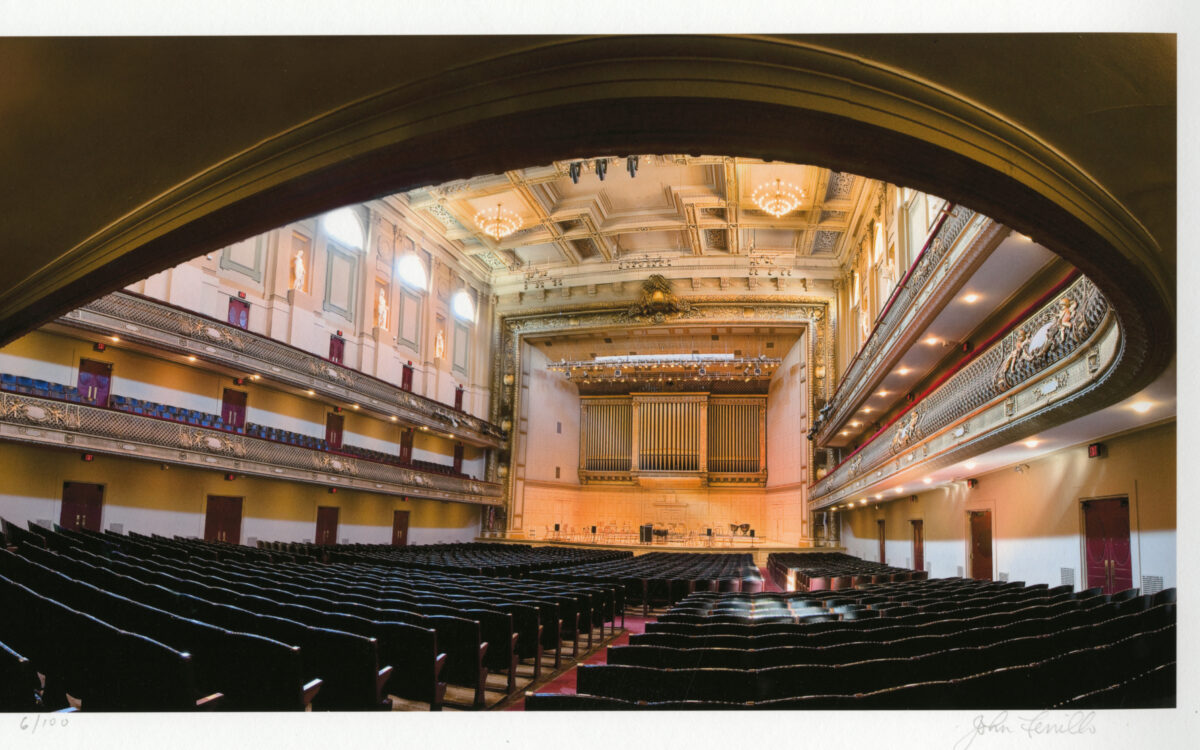Anatomy of a Symphony Hall Chair
The design and framework of the seating of Symphony Hall has not changed since the hall opened in 1900. The original chairs had a wooden base that were cushioned with horse hair, covered with leather, trimmed with leather gimp, secured with brass tacks, and identified with brass numbers and letters. With time, each chair needs repair, and with time, compliance codes change. The seats are no longer covered in leather, but with fire retardant material, and cushioned with a synthetic material. The brass numbers and letters are slowly being replaced with aluminum ones. In this exhibit, an example of the original construction of a Symphony Hall seat is displayed.

Leather gimp and brass tacks, number, and letter for a Symphony Hall chair

Designed for Sound, Function, and Beauty
Page from Wallace Sabine’s Architectural Acoustics of the New Boston Music Hall
Sabine’s forward-looking acoustical principles extended even to considering the material of the seats within a hall.
Symphony Hall during the change-over from the Symphony season to the Pops season
Audience seats are removed from the orchestra level after the Symphony season and lowered to the basement through an elevator in the floor to make room for the tables and chairs used during the Pops season. (Paul E. Genereux)
BSO Principal Oboe and accomplished photographer John Ferrillo captures a peaceful moment among the 2,625 seats in Symphony Hall (John Ferrillo)





